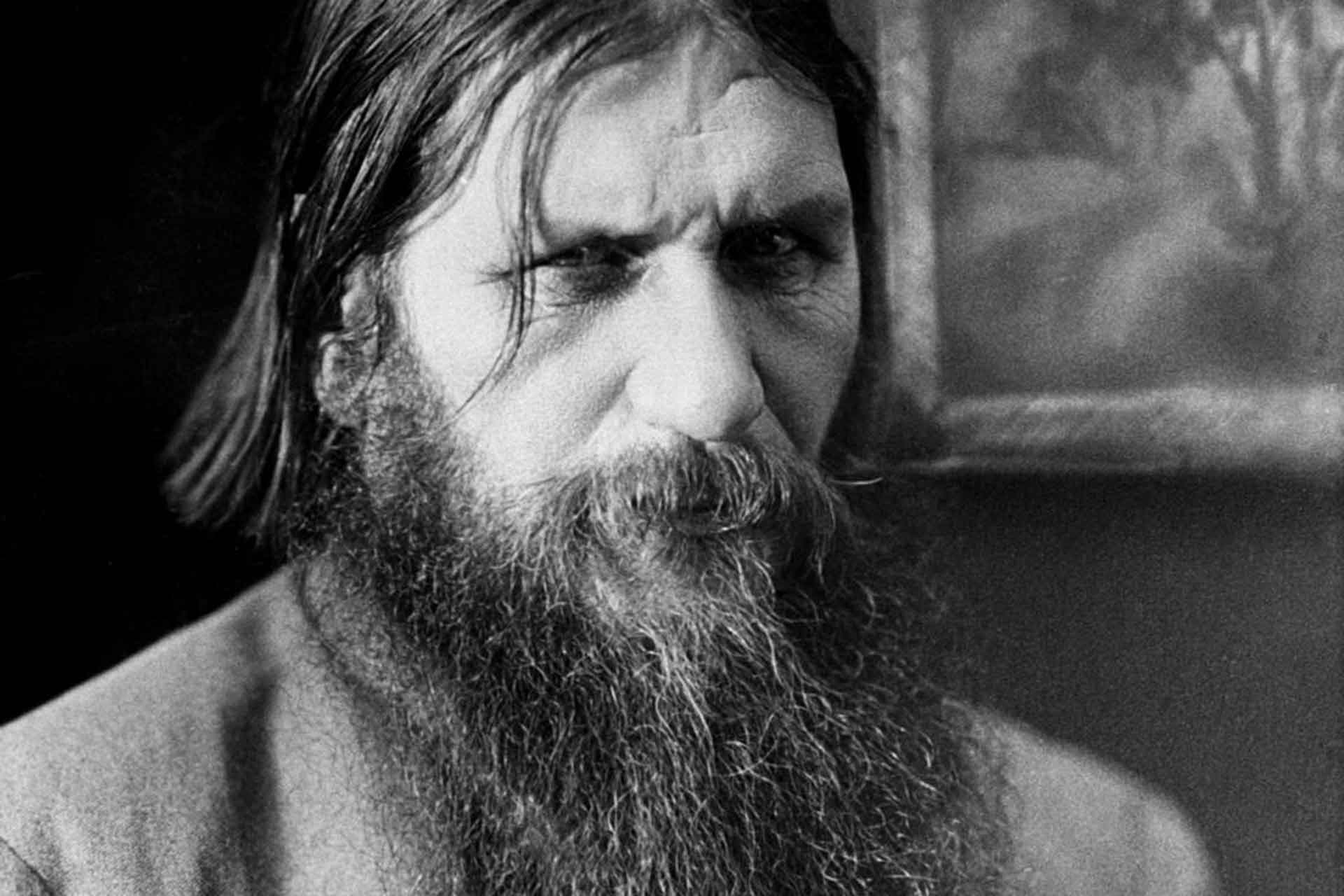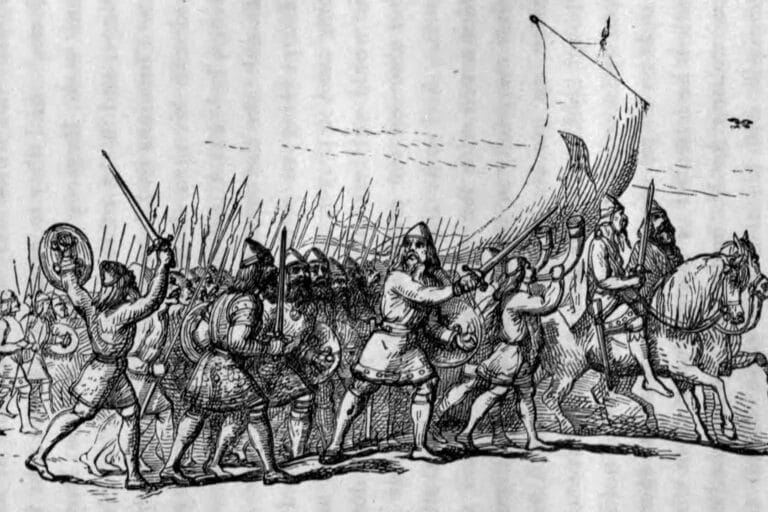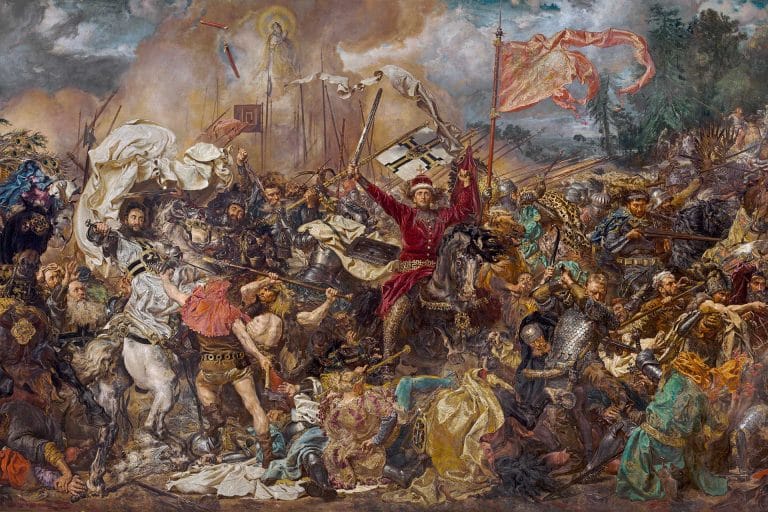Grigori Rasputin: The Mysterious Monk Who Held the Romanovs Captive
Grigori Rasputin, a name that still sends shivers down the spines of history enthusiasts, was a Siberian-born mystic and self-proclaimed holy man who would play an undeniably influential role in the final years of the Romanov dynasty. Despite his humble beginnings, Rasputin’s ascent to the heart of Russian royalty is a tale wrapped in mysticism, political intrigue, and controversial charisma.
The allure and magnetism he wielded, especially over Tsarina Alexandra, paved the way for his deep-rooted influence in the royal court, a power that many believe played a hand in the tragic downfall of Russia’s last imperial family. This article seeks to unravel the layers of Rasputin’s enigmatic persona, shedding light on the man who seemingly held the fate of the Romanovs in his hands.
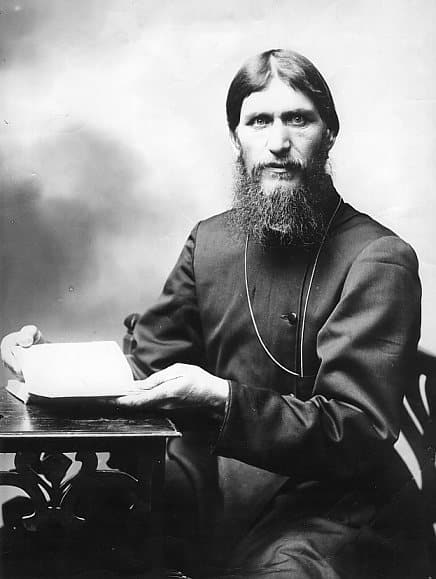
Early Life of Grigori Rasputin: Origins and Uncharted Youth
Born in the small Siberian village of Pokrovskoye in 1869, Grigori Rasputin’s early life was markedly detached from the royal circles he would later permeate. The mystic’s origins were humble and inconspicuous, sprouting not from nobility’s affluence but from rural Russia’s gritty soils. His parents, Efim and Anna, were farmers, and the wilderness of Siberia served as a rugged backdrop to his formative years. Despite later tales that painted his youth as unruly and somewhat mischievous, no definitive records exist that solidify the more severe claims of offenses such as horse theft, rumored to be part of his early résumé of rebellion.
At eighteen, he married Praskovya Dubrovina, a union that would bring three children into the world. Praskovya, often relegated to the shadows of Rasputin’s later notorious life, remained in Pokrovskoye for most of her life. She dutifully raised their children while Rasputin’s influence at the Russian court in St. Petersburg blossomed, and his name became synonymous with mystery and controversy across the expansive stretches of the Russian Empire. The distance between Rasputin’s family life and the political machinations of his later years draws a stark contrast, weaving a narrative that underscores the monk’s complexity and mysterious nature.
Navigating through the early pages of Rasputin’s life story necessitates an understanding that much of his history is enshrouded in layers of myth, conjecture, and, often, outright fabrication. His rural and unremarkable beginnings hardly foreshadowed the enigmatic and divisive figure he would become. From Siberian peasantry to a polarizing protagonist in the heart of the Russian Empire’s demise, Grigori Rasputin exemplifies a journey where history and myth are inseparably intertwined, crafting a tale that still perplexes historians and enthusiasts alike.
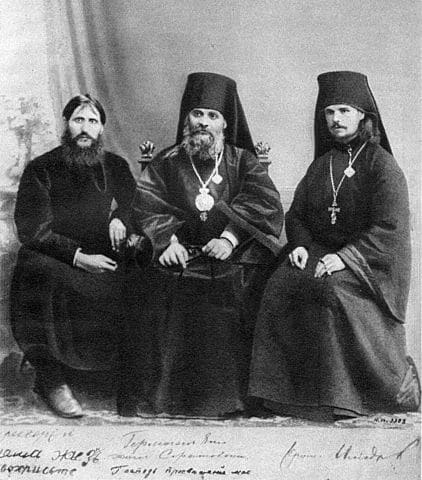
Rasputin’s Spiritual Awakening: From Peasant to Prophetic Wanderer
The year 1897 marked a pivotal moment in the life of Grigori Rasputin. What began as a pilgrimage to the St. Nicholas Monastery in Verkhoturye was a transformative journey that would shape his destiny. Upon his return to Pokrovskoye, those who once knew the young peasant were taken aback by the profound metamorphosis he had undergone. No longer the same man, Rasputin’s demeanor radiated a spiritual intensity; his unkempt appearance and fervent mannerisms echoed an inner transformation. He renounced meat and alcohol, embraced vegetarianism, and exhibited an ardent devotion to prayer and song, which surpassed his earlier religious practices.
In the wake of this transformation, Rasputin embraced the life of a “strannik,” or a holy wanderer, traversing the expansive Russian landscapes on spiritual pilgrimages. This path was not a solitary one. By the onset of the 20th century, the holy man had magnetically drawn a devoted circle of followers. Within the confines of Pokrovskoye, family members, along with other local peasants, were captivated by his spiritual magnetism. The makeshift chapel in the root cellar of his father, Yefim’s household, became a clandestine sanctuary.
On Sundays and holy days, Rasputin led his followers in intense prayer sessions shrouded in secrecy. The secrecy only intensified rumors about their practices — whispers of ceremonial washings by his female adherents, and eerie, unfamiliar songs filled the village air. As his influence grew, so did the suspicion and disdain from the village priest and other skeptical villagers, casting an ambivalent shadow over the holy man’s nascent spiritual leadership.
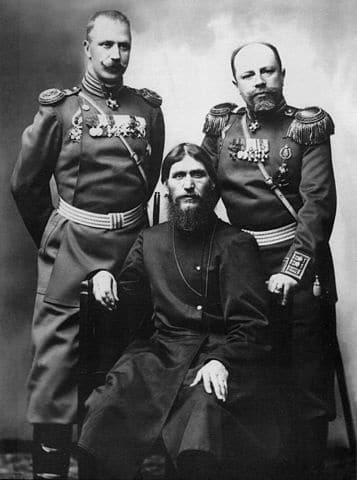
Rasputin’s Ascent: The Monk’s Journey to the Heart of the Romanov Empire
In the early 1900s, Siberia was abuzz with tales of a charismatic mystic who quickly became more than a local spiritual figure. Word of Grigori Rasputin’s unique ceremonies, spiritual fervor, and captivating aura started to drift far beyond the boundaries of Pokrovskoye, capturing the imagination of many. But while Siberia was the foundation, it was the vibrant heart of Russian aristocracy in Saint Petersburg, where the monk would make a lasting impression.
Upon his travels to Saint Petersburg, Rasputin’s fate took a fortuitous turn. He became acquainted with the so-called “Black Princesses,” Militsa and Anastasia of Montenegro. These princesses, who were married to cousins of Tsar Nicholas II, acted as Grigori’s conduits to the world of Russian nobility and high society.
A profound interest in alternative religious movements marked this era in Saint Petersburg. The aristocracy was deeply enchanted by spiritualism, theosophy, and an insatiable curiosity for the occult and supernatural. Rasputin’s entrance into this world was like fueling an already roaring fire. His mysticism and purported spiritual prowess seemed almost tailored to the prevailing inclinations of the era.
During this pivotal period, Rasputin’s path converged with that of the Romanovs. On November 1, 1905, within the grand confines of the Peterhof Palace, he had his inaugural meeting with Tsar Nicholas II. The encounter was so significant that Nicholas noted it in his diary, highlighting their meeting with “a man of God – Grigory, from Tobolsk province.”
Though Rasputin briefly returned to Pokrovskoye after their first meeting, their paths were destined to cross again. In July 1906, after sending the Tsar a telegram expressing his desire to present an icon of St. Simeon of Verkhoturye, he once again found himself in the company of Nicholas and Alexandra. During this visit, he was also introduced to their children, further deepening his ties with the imperial family.

Rasputin and the Royal Trust: The Healing of Alexei
The relationship between Grigori Rasputin and the Romanovs is a labyrinth of faith, desperation, and deep-seated trust. Central to this bond was the frail health of Tsesarevich Alexei Nikolaevich, the heir to the Russian throne, who was plagued by the genetic disorder hemophilia. The exact timeline of events that propelled Rasputin from a mere spiritual advisor to the Romanovs’ beacon of hope for their son’s survival is nebulous, but what remains undeniable is the sheer faith Empress Alexandra had in the mystic’s healing prowess. Alexandra’s steadfast friend, Anna Vyrubova, joined this chorus of believers quickly after witnessing a particularly miraculous recovery of Alexei post-Grigori’s prayers.
The summer of 1912 tested the Romanovs’ faith and resilience. After a particularly rough carriage ride, Alexei suffered from a painful internal hemorrhage. The young prince lay in torment, his life precariously hanging in the balance. As modern medicine faltered, a desperate Alexandra, through Vyrubova, reached out to Rasputin, who was then in distant Siberia. His reassuring words came as a telegram: “God has seen your tears and heard your prayers. Do not grieve. The Little One will not die. Do not allow the doctors to bother him too much.” This reassurance offered the distressed mother a glimmer of hope. As if on cue, Alexei’s condition began to stabilize.
The doctors, including Dr. S. P. Fedorov, were baffled by the rapid turnaround. In the face of what seemed like divine intervention, skepticism waned, and faith thrived. The mystery surrounding Rasputin’s role in Alexei’s recovery remains one of history’s intriguing puzzles. Robert K. Massie, a historian, proffers two theories: perhaps the insistence on minimal medical intervention gave the boy’s body the respite it needed, or maybe the calming influence he had on Alexandra indirectly alleviated Alexei’s stress.
Over the years, speculations have ranged from hypnosis to Rasputin’s possible discouragement of aspirin, a known pain reliever but an unknown blood thinner at the time. Whatever the cause, this event further solidified the “mad monks” position as the indispensable guardian of the Romanov heir.

Rasputin’s Contentious Court Presence
Grigori Rasputin’s rise to prominence within the Romanov court was not without its shadows. With his magnetic charisma and supposed divine powers, the mystic from Siberia quickly found himself in an influential position under Nicholas II. Granted the title of “lampadnik,” Rasputin was tasked with the sacred duty of maintaining the glow of the lamps before the palace’s religious icons.
This newfound role, however trivial it might seem, provided him unparalleled access to the royal quarters and the imperial family. It didn’t take long for whispers of impropriety to circulate. It was rumored Rasputin was leveraging his newfound stature, securing bribes, and indulging in sensual liaisons with his ever-expanding admirers.
The trust and faith that the royal family placed in him did not sit well with everyone. As Rasputin’s influence burgeoned, so too did the accusations against him. His religious contemporaries called him a heretic; in his hometown of Pokrovskoye, the local clergy vehemently denounced him, decrying his supposedly blasphemous teachings. The Bishop of Tobolsk initiated a formal inquiry, painting Rasputin as a purveyor of deviant and heretical doctrine. The discontent wasn’t just limited to the religious sphere. Al alarmed by Rasputin’s sway over the Tsar, Prime Minister Pyotr Stolypin ordered an investigation into the mystic’s activities.
Yet, in a testament to Rasputin’s uncanny ability to remain ensconced in power, even the findings of this probe couldn’t significantly curtail his influence. Accusations took a darker tone when Kehioniya Berlatskaya, once a fervent supporter of Rasputin, accused him of sexual assault. Tales of inappropriate conduct multiplied, tainting his interactions with the royal family, especially with the Tsar’s young daughters, Olga and Tatiana. While secured by faith and desperation, the holy man’s place in the Romanov court was marred by a deluge of controversies that would define his enigmatic legacy.
The Attempt on Rasputin’s Life by a Former Follower
The tumultuous life of Grigori Rasputin, the enigmatic monk who held sway over the Romanovs, was punctuated with controversies, many of which put him in harm’s way. One such episode occurred in the summer of 1914, when Chionya Guseva, a disillusioned follower, took it upon herself to end Rasputin’s life. In a public square of his hometown, Pokrovskoye, Guseva lunged at the “mad monk”, plunging a knife into his abdomen with such force that it exposed his entrails. Though the wounds were grievous and Rasputin’s survival seemed uncertain, he would ultimately recover from the assassination attempt, further bolstering his claims of divine protection.
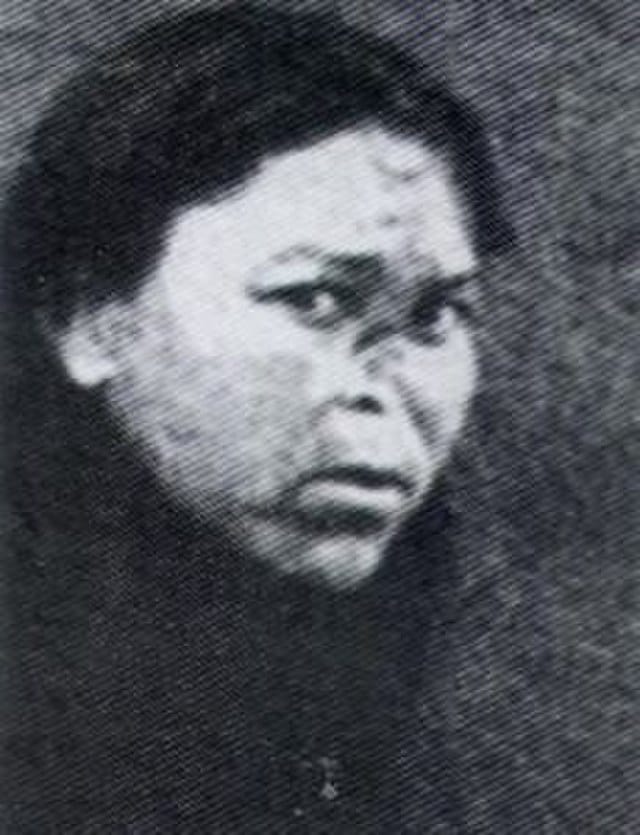
Guseva’s violent act wasn’t born in isolation. She was a devoted follower of Iliodor, a former priest who had initially been a staunch supporter of Rasputin. But their camaraderie soured as Iliodor grew increasingly disillusioned with Grigori’s unchecked indulgences, particularly the mystic’s alleged sexual improprieties. Iliodor’s opposition culminated in December 1911 when he vehemently denounced Rasputin’s debauchery and insatiable hunger for power. Iliodor’s zeal was not limited to personal vendettas; he was also a fervent conservative and a vocal anti-Semite. He collaborated with a group of establishment figures to drive a wedge between the mystic and the Romanovs in 1911.
But their collective endeavors bore no fruit. Consequently, Iliodor faced the wrath of the establishment, resulting in his banishment from Saint Petersburg and eventual defrocking. The failed assassination attempt by Guseva underscored the deep divisions Rasputin’s presence had sown, not just among the Russian populace but even within his once-loyal circle of followers.

Rasputin’s Ascendant Mysticism and the Shadows of War
The failed assassination attempt on Grigori Rasputin by Chionya Guseva did more than just leave him physically scarred; it added an enigmatic layer to his mystique. As he miraculously recovered from a near-fatal wound, whispers of his divine invulnerability spread across Russia. To many, this harrowing event was a testament to Rasputin’s supernatural powers and God’s explicit protection. His influence over the Romanovs, especially the Tsarina, deepened, as they saw in him not just a spiritual guide but a living testament to the divine. Rasputin’s aura of invincibility became integral to his narrative, and his prophecies, previously met with skepticism, now found a wider audience.
But as Rasputin’s star rose, dark clouds were gathering over Russia. The onset of World War I in 1914 brought unprecedented challenges for the Romanov dynasty. The war drained Russia’s resources, decimated its young men, and spread misery and hunger across the nation. Nicholas II’s decision to take command of the Russian armies in 1915, leaving the country’s governance primarily to the Tsarina and, by extension, Rasputin, proved disastrous.
Rasputin’s controversial influence over state decisions and his mysticism made him an easy scapegoat for Russia’s misfortunes. As the war progressed and discontent grew, so did the criticisms and conspiracies surrounding the once revered holy man, symbolizing for many the corruption and decay of the Romanov reign. The stage had been set for one of the most tumultuous periods in Russian history, with Grigori at the storm’s eye.

The Enigmatic End of Russia’s “Mad Monk”
In the shadowed corridors of history, the tale of Grigori Rasputin’s assassination stands as a testament to the dangers of unchecked influence and the desperate measures taken to end it. As Rasputin’s sway over the Romanovs, especially Tsarina Alexandra, grew increasingly evident, a concerned faction emerged within Russia’s nobility. By December 1916, this faction, led by notable figures such as Purishkevich, Grand Duke Dmitri Pavlovich, and Prince Felix Yusupov, hatched a plan they believed would save the Russian Empire from further degradation. They aimed to eradicate Rasputin, and the chosen location for this daring act was the Yusupovs’ opulent Moika Palace.
The early hours of December 30, 1916, saw the unfolding of a grim tableau. Rasputin’s lifeless body was discovered with three gunshot wounds, the fatal one to his forehead. While many elements of that night remain shrouded in speculation, what has been passed down through the ages, primarily because of its dramatic detailing, is Prince Yusupov’s version.
In his memoirs, Yusupov narrated a story rife with suspense. According to him, Rasputin was initially served cakes and wine laced with poison. Yet, to Yusupov’s dismay, the monk showed no signs of distress. In increasing desperation, Rasputin was shot but still exhibited signs of life, leading to further violent attempts to end him.
Yusupov’s account, gripping as it may be, has often been contrasted with another more scandalous whisper that floated in the aftermath of the assassination. It was rumored, albeit without solid proof, that Grand Duchess Tatiana, allegedly a previous victim of Rasputin’s advances, was present during the assassination. Dressed as a lieutenant of the Chevaliers-Gardes, she supposedly bore witness to Rasputin’s death, seeking vengeance for her past sufferings rumored to include rape. French ambassador to Russia, Maurice Paléologue, even penned a claim about Tatiana witnessing Rasputin’s castration. However, he expressed skepticism over its authenticity.
As the centennial of Rasputin’s death dawned, scholars and enthusiasts revisited the enigma of that fateful night. Dr. Carolyn Harris of the University of Toronto presented a less theatrical analysis based on the assertions of Rasputin’s daughter and the autopsy report. She noted the unlikelihood of Rasputin consuming the poisoned cakes, given his known aversion to sweet foods. The autopsy, performed by the official surgeon, didn’t indicate poisoning or drowning but pointed toward death from a single bullet fired closely into his head. This sobering perspective, devoid of the embellishments that time often adds to history, paints a picture of a man trapped by his mystique, falling victim to political machinations in a tumultuous era.
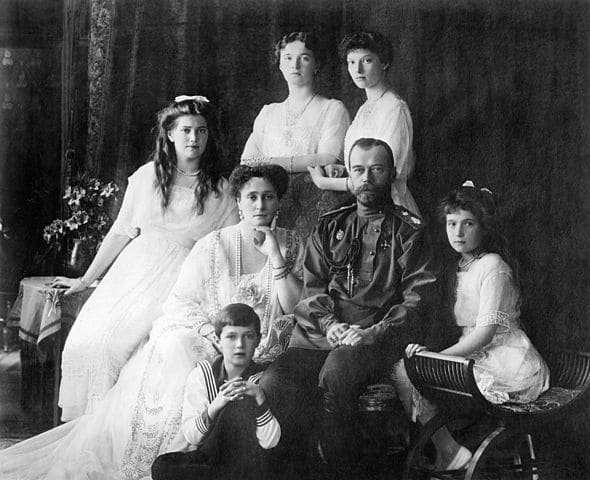
The Romanovs’ Twilight: After Rasputin
The death of Grigori Rasputin, often described as the “Mad Monk” who influenced the Russian imperial family, sent shockwaves throughout Russia, especially among the country’s elite. The details surrounding his murder were shrouded in a web of rumors, gossip, and half-truths. When the news of Rasputin’s demise became public, the mysterious circumstances fueled further intrigue. Clearly, his influence had made him a host of powerful enemies.
Despite Rasputin’s death, the damage to the reputation of the Romanov family was irreversible. His close association with Tsar Nicholas II and Empress Alexandra had deeply tarnished the monarchy’s image. Amid World War I, Russia was also grappling with economic hardships and political upheavals. Rasputin’s influence and subsequent murder only increased the public’s discontent with the Romanov dynasty. Just a few months after the mystics death, Tsar Nicholas II abdicated the throne, ending over three centuries of the Romanov dynasty’s rule in Russia. The country’s political landscape was changing rapidly, and the Bolsheviks, led by Vladimir Lenin, were rising in prominence.
The fate of the Romanovs following Rasputin’s death was tragic. Nicholas, Alexandra, and their five children were placed under house arrest. The royal family was eventually moved to Yekaterinburg in the Ural Mountains. In July 1918, it was here that Bolsheviks brutally executed the entire Romanov family on the orders of the Ural Soviet. This grisly end signaled the end of imperial Russia and ushered in a new era of Communist rule.
Rasputin’s body, once buried with the respect accorded to someone held in royal favor, was exhumed and burned in the aftermath of Nicholas’ abdication, as the new leadership did not want his grave to become a symbol or gathering spot for royalists. In many ways, the tumultuous relationship between Rasputin and the Romanovs and their respective fates encapsulated the chaos, transition, and bloodshed of early 20th-century Russia.

